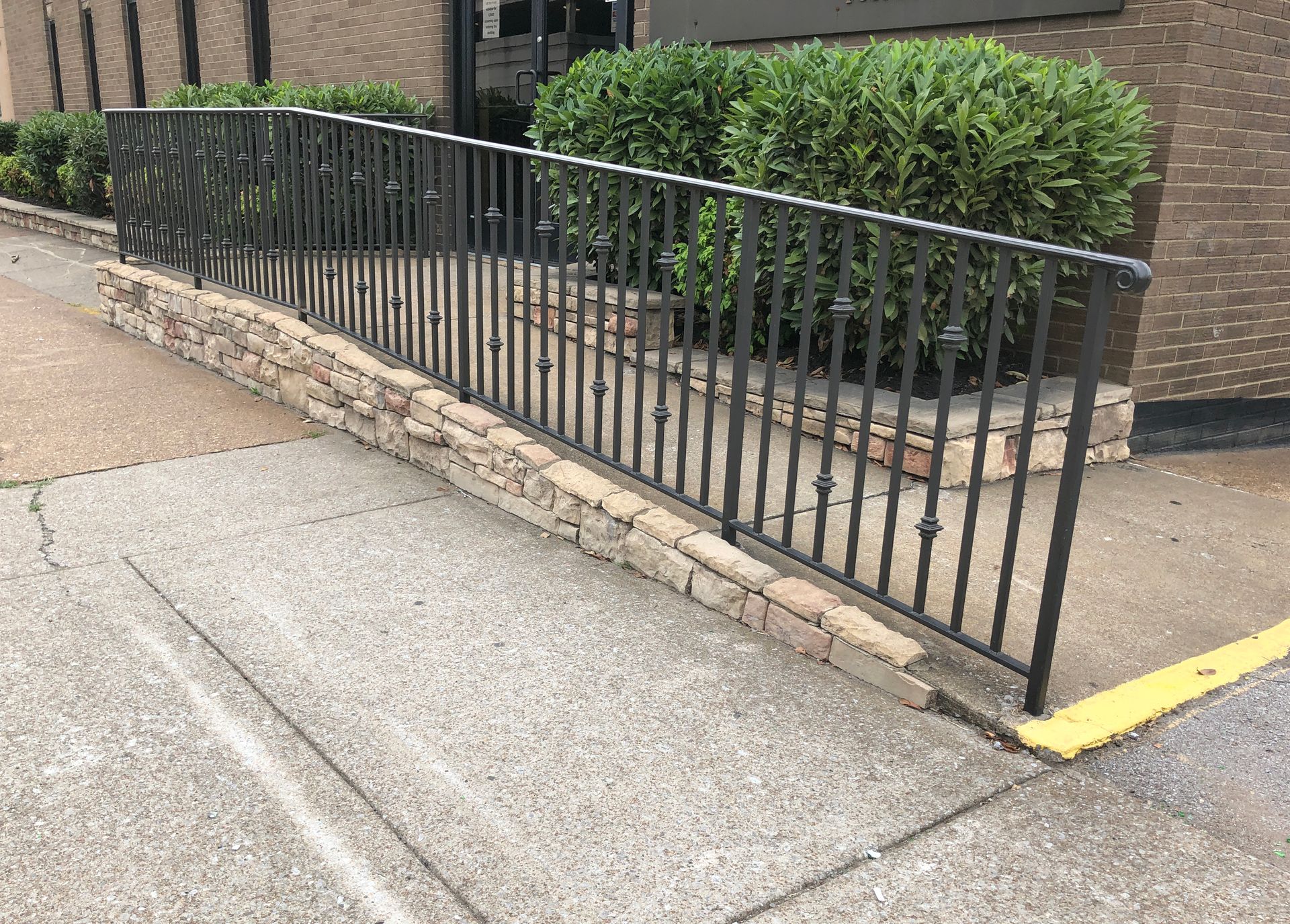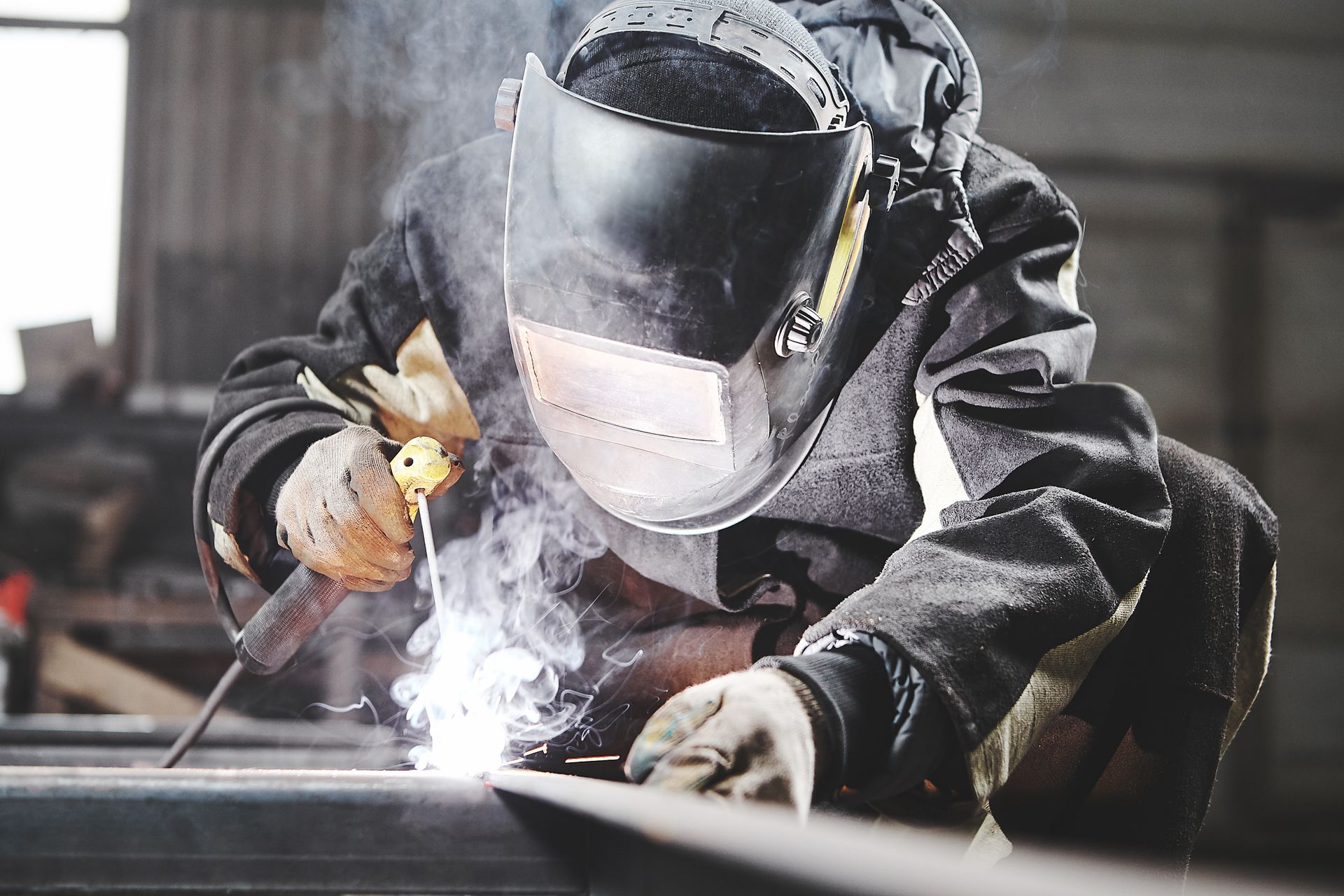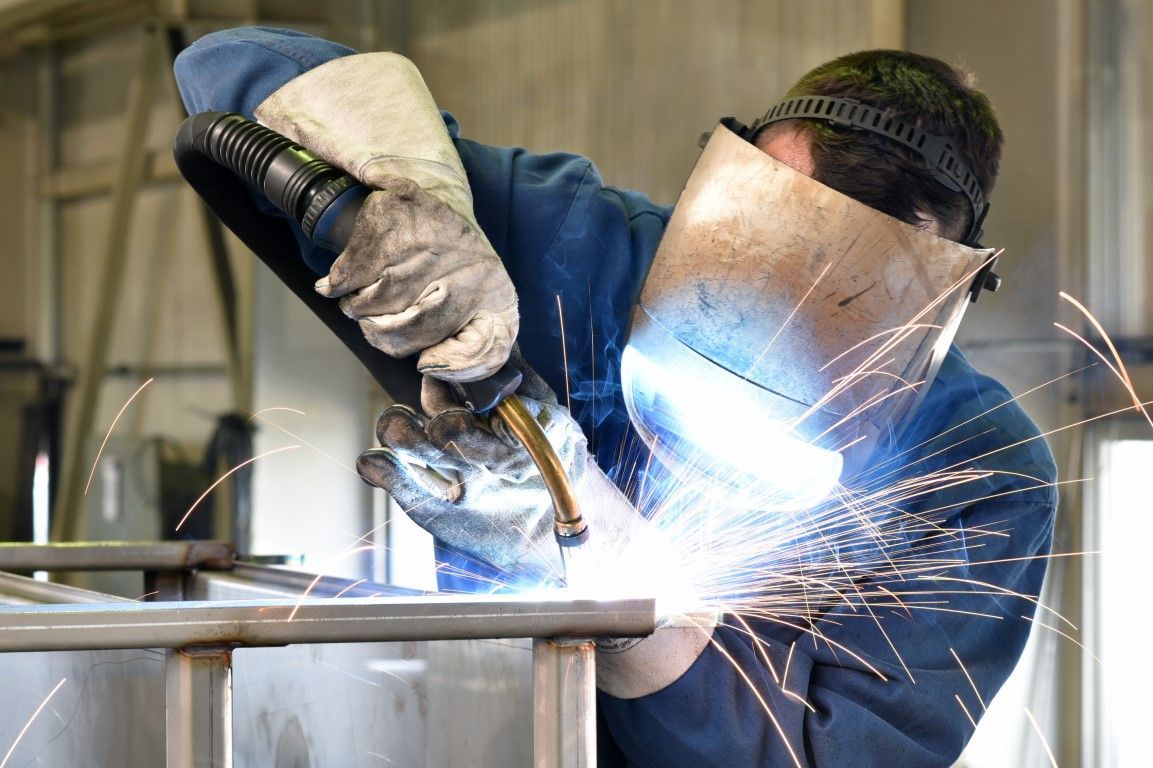The 4 Types of Welding
What are the 4 Main Types of Welding
Welding is a cornerstone of many industries, providing the strength and precision associated with metalwork. Here at Top Peak Welding, we offer specialized services and solutions for all welding jobs. Whether you need to get your metal gate fixed or a custom piece fabricated for your construction or metal art, there are plenty of welding techniques out there that cater to specific needs. In this article, we will highlight the four most popular types of welding: MIG welding, TIG welding, Flux-core arc welding, and stick welding.
MIG Welding
MIG welding, also known as gas metal arc welding (GMAW) or solid wire welding, utilizes a wire electrode continuously fed from a spool mounted on the MIG welder. When the trigger is pulled, it activates the welding current and MIG welding gas, typically a mix of argon and CO2. This process forms an electric arc between the wire electrode and the workpiece, heating the metals above their melting points. The wire electrode, melting as it's used, serves as the filler metal, making MIG welding a consumable electrode process. The MIG welding wire, usually MIG welding aluminum or stainless steel, is fed through a flexible tube or conduit liner, extending to the torch nozzle where it emerges.
MIG welding boosts productivity with faster work and cleaner results, but its initial cost and limited positions pose challenges. Outdoor use is also tricky on a windy day because the gas could be blown away which will result in a undesirable looking weld. Plus proper metal preparation is necessary for quality welds when using this method.
Applications of MIG welding include automotive, construction, manufacturing, and fabrication industries, plus welding of sheets of metals that are 0.8 mm thick and above. If you need to get an urgent project finished, our seasoned welders can get the job done in no time!

TIG Welding
TIG welding, also known as gas tungsten arc welding (GTAW) or Heliarc welding, utilizes a tungsten electrode with an extremely high melting point, making it a non-consumable electrode process. The electric arc generated between the electrode and the base metal melts the metal for welding. In TIG welding, the welding current typically flows in a loop from the TIG welding machine to the torch, into the work, and back, with the option to use direct current (DC) or alternating current (AC) depending on the material being welded.
With TIG welding, the operator can control the weld puddle’s temperature with a foot pedal, allowing for precise control over the weld bead. This process is ideal for cosmetic welds and offers the advantage of producing clean, high-quality welds, particularly when welding aluminum. TIG welding is versatile, allowing for welding in any position and with a variety of metals and alloys, including aluminum, making it suitable for art and crafts, aerospace, and construction, as well as welding extremely thin sheets of metal (0.6 mm and thinner).
Additionally, TIG welding gas usually only requires one type, argon or helium, simplifying the welding process. However, it can be challenging and time-consuming, requiring skilled technicians and thorough cleaning of equipment after each use. Fortunately, at Top Peak Welding, we have professional TIG welders in Colorado Springs willing to travel to the Denver or Pueblo area who can effortlessly perform high-intensity and extensive TIG welding projects.
Check out this MIG vs TIG welding article for a full comparison of the two welding types.
Flux-Core Arc welding
Flux core welding, also known as flux-core arc welding (FCA or FCAW) was introduced in the 1950s and utilizes a tubular flux core wire electrode filled with flux, providing versatility in welding various materials and achieving high deposition rates. Unlike MIG welding, flux core welding can be self-shielded (FCAW-S) or gas-shielded (FCAW-G), each with distinct advantages and chemistry. Self-shielded flux core eliminates the need for additional shielding gas equipment, making it less sensitive to drafts and more cost-effective, while gas-shielded flux core utilizes gases like CO2 or CO2-argon blends to achieve high deposition rates. Despite its benefits, flux-cored welding may encounter issues such as porosity, slag inclusion, fume emission, positional welding challenges, and higher consumable costs.
Flux core welding equipment settings, including polarity, wire speed, and voltage, are adjusted on the machine itself, with direct current (DC) typically used. The current flows in a complete circle from the machine to the gun, into the workpiece, and back to the machine, facilitated by a work lead. Flux core welding is a preferred method for many industrial applications due to its efficiency and versatility, providing deep penetration for thick materials. Our experienced flux core welders at Top Peak are proficient in manipulating the flux core wire and adjusting welding parameters to ensure high-quality welds in various scenarios.
If you're needing to hire a structural welder for large or small contract work,
give us a ring. Availability will depend on our current work load, but we have access to certified, experienced structural welders who can get your jobs done with the highest quality.
Stick Welding
Stick welding, also known as shielded metal arc welding (SMAW), uses a consumable metal electrode covered with flux to create an electric arc that melts both the electrode and the base metal, forming a molten weld pool. The flux releases protective gases and forms a slag layer over the weld, eliminating the need for external shielding gas. While versatile and cost-effective, stick welding can be slower and more complex, requiring skilled operators and producing more spatter compared to other methods.

Stick welding is popular in construction, shipbuilding, automotive manufacturing, and heavy equipment repair due to its versatility and affordability, but achieving quality welds requires skilled operators. Proper electrode selection is crucial for strong welds, as electrodes are designed for specific metals and positions. Despite its slower speed and complexity, stick welding remains reliable for heavy-duty applications.
If you’re looking for a Springs stick welder, you’re in the right place. Contact us at
719-259-3359 and hire the best professional welders.
Other Types of Welding
Plasma Arc Welding
Plasma arc welding (PAW) is similar to gas tungsten arc welding (GTAW), but it uses a constricted plasma arc formed within the torch body and exits at high velocities and temperatures. This process allows for precise and high-energy welding or cutting, with plasma temperatures reaching up to 50,400 °F (28,000 °C).
Atomic Hydrogen Welding
Atomic hydrogen welding (AHW) uses an arc between two tungsten electrodes in a hydrogen atmosphere, producing extremely high temperatures of 3400 to 4000 °C. This method, invented by Irving Langmuir, effectively welds metals like tungsten while the hydrogen gas prevents oxidation and contamination.
Electric Resistance Welding
Electric resistance welding (ERW) welds metal parts by heating them with an electric current, melting the joint metal, widely used in steel pipe production and automobile body assembly, influenced by factors such as workpiece proportions, coatings, and electrode materials.
Electron-Beam Welding
Electron-beam welding (EBW) involves directing a high-velocity electron beam onto the materials to be joined, causing them to melt and fuse due to the heat generated from the electrons' kinetic energy upon impact, typically carried out in a vacuum to maintain the integrity of the electron beam.
Welding Type Comparison
MIG vs TIG welding
MIG welding is cost-effective, fast, and easy to set up, while TIG welding offers superior quality but demands more expertise and time. For a comprehensive differentiation of the two, check our other post about MIG vs TIG welding.
Consulting our experienced welders is advisable to navigate project-specific needs and material considerations, ultimately impacting the overall expenses. Our professionals can make these recommendations based on your budget—call us now for a free quote!
Flux Core Welding (FCAW) vs Stick welding (SMAW)
Flux-core welding, suitable for lighter tasks, uses flux-filled wire for quick, clean operation, but may require expensive equipment and is unsuitable for aluminum or cast iron due to flux contamination risks. A good weld vs. bad weld in flux-core welding can often be distinguished by the presence of porosity or slag inclusions, which can compromise the appearance as well as the strength of the weld. On the other hand, stick welding is preferred for heavy-duty outdoor projects and relies on a flux-coated electrode for shielding and conductivity, producing quality welds but with challenges like slower speed and spatter.
Flux Core Welding (FCAW) vs MIG Welding (GMAW)
Flux core welding uses flux-filled wire for self-shielding, often eliminating the need for external gas, making it more convenient. On the other hand, MIG welding relies on solid wire and external shielding gas, offering versatility with different gas options like argon or carbon dioxide.
Hire Skilled Welders in Colorado Spring, CO
From Castle Rock to Security-Widefield, Parker to Highlands Ranch, and all Colorado Springs areas, we're equipped to handle all your welding needs. Having covered MIG welding, TIG welding, Flux-cored arc welding, stick welding, and other welding techniques, it’s time to answer the question: "Which welding method suits my project best?"
The answer: It depends. Each welding process has its own advantages and limitations, and what may be ideal for one project may not be the best choice for another.
Contact us today, and our skilled welders at Top Peak will examine the task and make a qualified decision with our expertise. We'll gladly discuss all details and provide a free quote for your job. Discover how we can elevate your welding projects to new heights!



